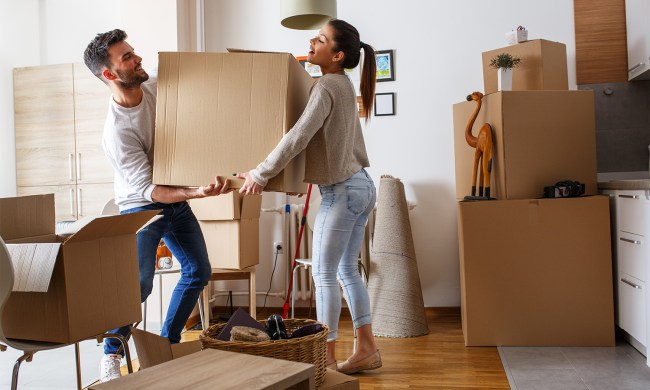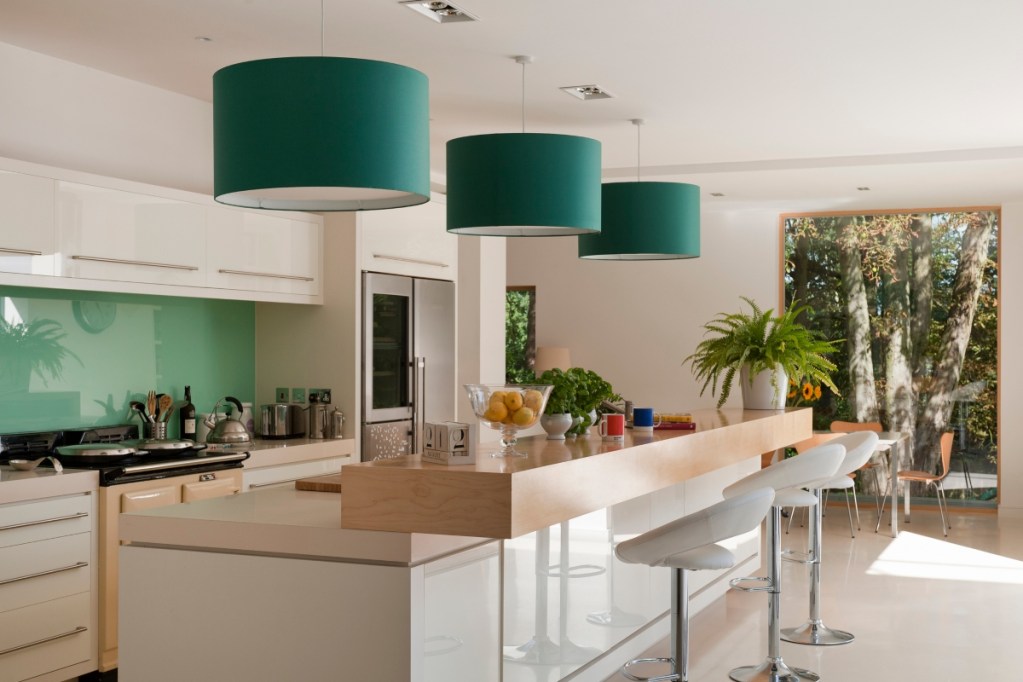
If your home design is lacking or just feels plain funky, it could be because of poor lighting. Lighting is an integral part of proper home design, and unfortunately, it’s often overlooked by homeowners. Proper lighting can make or break your aesthetic, so putting extra attention and detail into creating the perfect lighting for your space is crucial.
Thankfully, lighting a room to set the right tone for your design doesn’t have to be complicated. Here are our best tips on how to properly light your home.
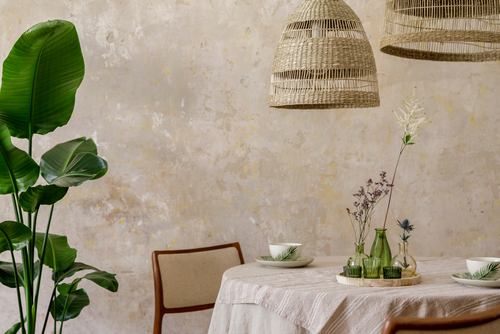
Why does proper lighting matter?
While it can be tempting to install a simple overhead light and call it a day, the truth is that this won’t always contribute to an impactful design. Some of the best home designs use lighting to enhance the appeal of the space. Here’s how lighting can change your interiors.
Sets the ambiance of the room
Lighting sets the ambiance of the room. Bright white lights create a sense of sterility, cleanliness, and airiness. Alternatively, warm yellow lights create a cozy and hygge feeling. Bright lights make a room feel more active and lively, while low lighting can make a space feel relaxing and soothing. Have you ever seen those videos of photographers and videographers discussing how lighting sets the mood of their composition? Well, interior design works just the same.
Can affect the colors and color palette of the room
Another reason proper lighting is so crucial for your interiors is because light can affect the colors and color palette of your room. Warm yellow lighting might make the space feel more yellow-toned. This extends to colorful LED strip lighting that teens often use in their bedroom designs. A colored light will cast a similar glow throughout the space, making an ordinary white wall appear as a different color. Depending on the aesthetic you want for your home, you might choose to avoid lighting that shifts the colors of your space in the evening.
Poor lighting can leave a room feeling boring, too stark, or cramped
If a room has poor lighting, it’s one of the quickest ways to ruin a good design. Poor lighting can make a room feel boring, stark, or cramped. Imagine a small windowless bathroom with a single dreary wall sconce. This can cast shadows across the walls and create an eerie, dark, and cramped feel in the space. While this may be great around Halloween, most people don’t want a dark, cramped bathroom year-round.
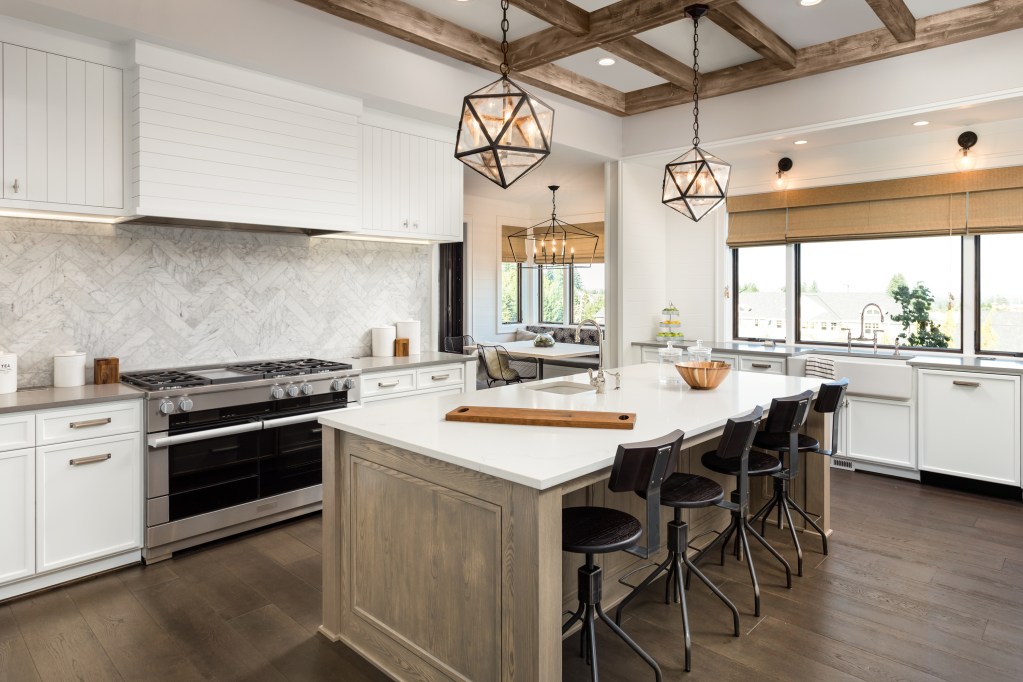
What to avoid when choosing lighting for your home
Before investing in your lighting sources, knowing what to avoid is important.
Don’t add too much light to the room
Adding too many light sources to a room can make the design feel overbearing. Some light fixtures may go unused, or you may find your space is overly bright, creating that “hospital bright” feel.
Don’t rely solely on one lamp
While it’s easy to fall in love with a great lamp, a singular light source isn’t always best for your space. This is especially important for rooms with no overhead lighting. Don’t rely on a single lamp to light your room throughout the entire day.
Don’t resort to overhead lighting as your only lighting source
Only relying on overhead lighting is also something you should avoid. While overhead lighting can be great, it can also be too bright for evenings or create discoloration in your design.
Don’t neglect natural lighting
While not every room in the house will have ample natural light, it’s fair to say you likely have some windows that can offer natural lighting during the day. Today’s home design trends toward using natural light as much as possible, so we highly recommend avoiding blackout curtains in communal spaces. Instead, lean into the biophilia and open up those shades.

How to light the communal spaces
Communal spaces need more overhead lighting and lighting alternatives than other rooms. For example, you may use overhead lighting during the day and lamps for evening lighting. Yellow-toned lighting, in general, should also be avoided in these spaces to prevent a drab or dark appearance.
Living room
The living room should have a nice, bright overhead light that’s white in undertone rather than yellow. A few standing lamps with off-white or yellow hues are best for evening lighting. Natural lighting is also vital in the living space if you can do it. Using thin curtains or blinds that can allow ample daylight into the room is preferred.
Kitchen
Kitchen lighting should be versatile. More options for lighting the space is generally a great practice. For example, an overhead light, a sink light, under-cabinet lighting strips, and a lamp or two are great ways to keep this space lit well throughout the day. A variety of options means you can adjust the light levels as needed as the day turns to night. Additionally, white lighting is better for kitchens as it gives off a clean and bright aesthetic. Natural lighting is also a must.
Dining room
Dining rooms don’t always have natural lighting, so keeping these spaces lit well in other ways is essential. A bright overhead light, typically off-white or yellow in tone, is excellent for creating a cozy mood. Wall sconces and lamps can also be used.

How to light more intimate rooms
Intimate rooms typically benefit from softer, more yellow-toned lighting. Lamps and wall sconces are popular choices.
Bedrooms
Overhead lighting is necessary in the bedroom but shouldn’t be the go-to light source. Instead, use natural light during the day and small bedside lamps or wall sconces for a moodier, cozier evening setting.
Bathrooms
Bathrooms should have brighter white lights for a clean and bright aesthetic. However, having wall sconces or yellow-toned lights as an alternative can make spa nights in the bathtub feel more intimate and relaxing.

Lighting rooms without natural light
Not every room comes with natural light sources. Rooms like basements, garages, and small bathrooms can feel dark and cramped even during the daytime because of a lack of natural lighting. But don’t fret. These spaces can be lit with bright white recessed lighting or other simple overhead light solutions to make the room feel bigger and less cramped.
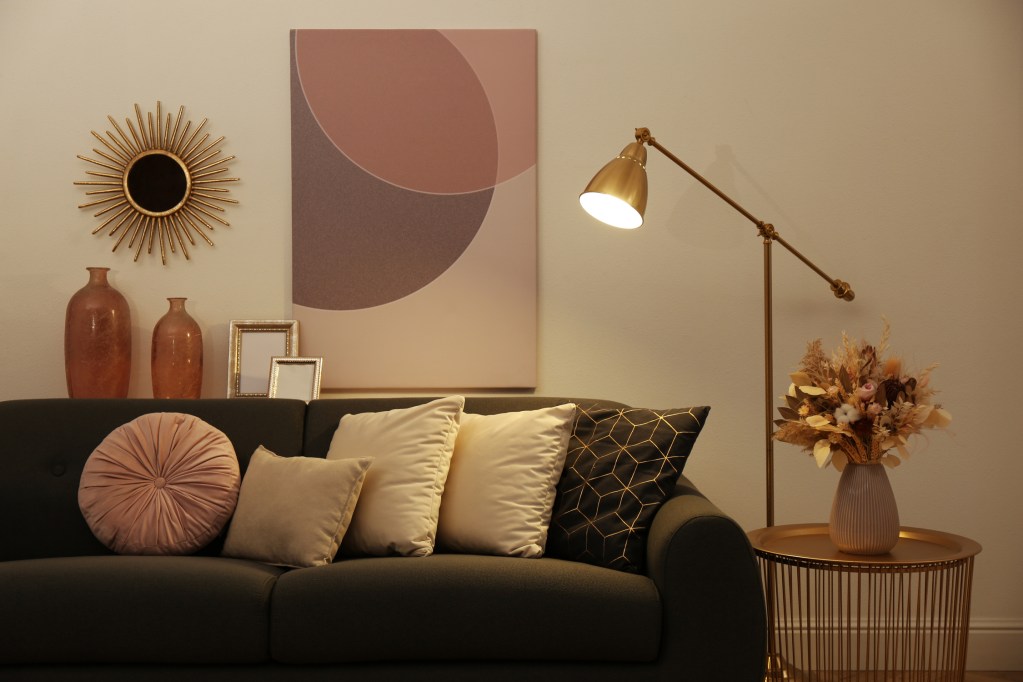
Different types of lighting for various times of day
As you invest in lighting in your home, consider what kind of light you’ll be using at different times of the day.
For example, in the living room, you may use the natural light from the windows during the day. Then, in the early evening, you may switch on the overhead light. And in the late evening before bed, you might find a nice warm-toned lamp for settling down.
Alternatively, the kitchen can have overhead lighting for dinner or cooking so there is plenty of visibility, and the room appears white, clean, and bright. However, for the evening, under-cabinet lighting may offer visibility but in a more relaxed and soothing way.
Lighting your home is more than picking a light fixture. You also need to consider how the tone of lighting will impact the room’s ambiance. Additionally, having multiple light sources means you can adjust the mood of the space throughout the day to curate the feeling you’re aiming for.



